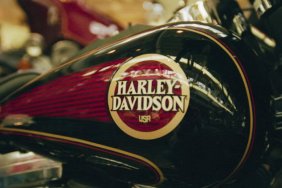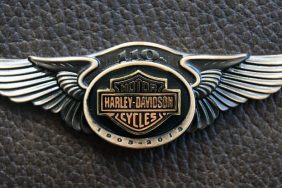
Harley-Davidson riders love their motorcycles. They often treat their bikes like beloved members of the family. That may not be a big scoop to the biker world, but the fact that those same riders can now help to design the very motorcycles they ride so passionately is major news.
The new Project Rushmore from Harley-Davidson is that rare occurrence when a manufacturer let customers help design the machines they ride. The result is a new line of more comfortable, high tech motorcycles.
All automakers and bike builders do market research, trying to get a jump on what consumers want to see in showrooms. However, it’s never a guarantee that the hopes and dreams of customers will transform into heavy metal and end up on the road. If the input of would be buyers does find its way to assembly lines, it can take several years to clear research and development.
Harley-Davidson twisted their throttle wide open with Project Rushmore – a company-wide effort to bring customer requested improvement to their high end production motorcycles with unprecedented speed.
To showcase its Project Rushmore bikes, Harley-Davidson invited press to Santiago, Chile. I was honored to be the only North American journalist on a journey offering the chance to ride a Rushmore model through the Andes Mountains to the beautiful rolling hills of Chilean wine country.
News of Project Rushmore emerged in 2013 – during Harley-Davidson’s 110th anniversary celebration. The effort became the largest model launch in the company’s history, including eight new touring motorcycles. The Rushmore family includes the Road King, Street Glide, Street Glide Special, Electra Glide Ultra Classic, Ultra Limited, Tri Glide Ultra, CVO Ultra Limited and CVO Road King. In each case, Harley-Davidson took their customer comments and focused the improvements on Rushmore editions in four key areas: Control, infotainment, feel and style.

For that increased control, Harley wanted Rushmore motorcycles to be more efficient at both acceleration and stopping. So, the eight resulting rides include either the new Twin-Cooled High Output Twin Cam 103 or the High Output Twin Cam 103 engine (both fuel injected). New Reflex Linked Brakes with ABS bring the straight line power under control.
Project Rushmore cycles offer a “car worthy” suite of infotainment features. H-D’s new Boom! Box color-screen system offers GPS navigation, voice recognition with Bluetooth connectivity, multifunction touchscreen, text-to-speech technology, support for intercom support and CB communications capability.
Good touring motorcycles are designed with long journeys in mind, and they must take it easy on your back while holding off muscle cramping as long as possible. To secure a good “feel” for Rushmore creations, Harley-Davidson installed a new “Batwing” fairing with split stream venting to break through the air more easily while sending the onrushing wind comfortably around and away from the rider. H-D claims the end result reduces head buffeting by 20%.
Harley’s definition of improved style seems to range far afield. Reaching beyond mere aesthetics such as thinner fenders and aluminum wheels, Project Rushmore styling reaches to larger saddlebags with new one touch latches and larger hand control switches.
Direct consumer input dictated many of these changes and how they were built into the new touring bikes. Harley-Davidson reached out to enthusiasts in small focus group meetings at dealerships, 75 one-on-one interviews with H-D touring riders at Sturgis, 15 focus groups in the US, six focus groups in Europe and quantitative studies with more 1,300 passengers. Riders could relay their personal wish lists or visions for the perfect long distance touring motorcycle directly to H-D staff.
All of that talk is the stuff of legendary press releases if it doesn’t translate to the road, so I was eager to grip the bars of the prime cut of Rushmore iron awaiting me at Harley-Davidson Santiago – the city’s sparkling dealership on the outskirts of the Latin capital’s modern downtown.

For the initial five hour ride into the Andes, I got my leg over a 2014 Street Glide Special. The Special was the perfect test vehicle try out Project Rushmore. Starting around $25,899, the Limited is a big, steady, comfortable touring motorcycle fully kitted out for long rides with all of those “control, infotainment, feel and style” elements.
As I road comfortably from the Andes foothills up to Chilean wine country, it became clear that the complete Rushmore treatment introduces a different riding experience. Traditional hauls across the countryside in the past were stripped down and basic — just riders, leathers, helmets and bikes with rudimentary gages. The man or woman holding the grips was left wandering alone with just the feel of onrushing air in the face, the sights of passing scenery and sounds of tortured wind.
While that was well and good for generations of riders, Project Rushmore opens up a world of comfy ergonomics, high-def music in rich stereo and the inability to wander due to very clear GPS graphics leading the way to a preset waypoint.
The downside to this evolution is the biker loses some of that “seat of the pants” perspective of more stripped down motorcycling as the comfortable specs and high-tech toys separate the rider from the road. But, that seems like a minor quibble while enjoying cramp-free miles and your favorite tunes en route to any stop — in or out of the South American mountains.
While Project Rushmore bikes obviously run to the higher end of the Harley-Davidson price spectrum, the expense seems worth it all the more at the end of a long ride — when all of those customer recommended improvements leave the rider less beat up and more energetic to enjoy any journey’s final destination.







